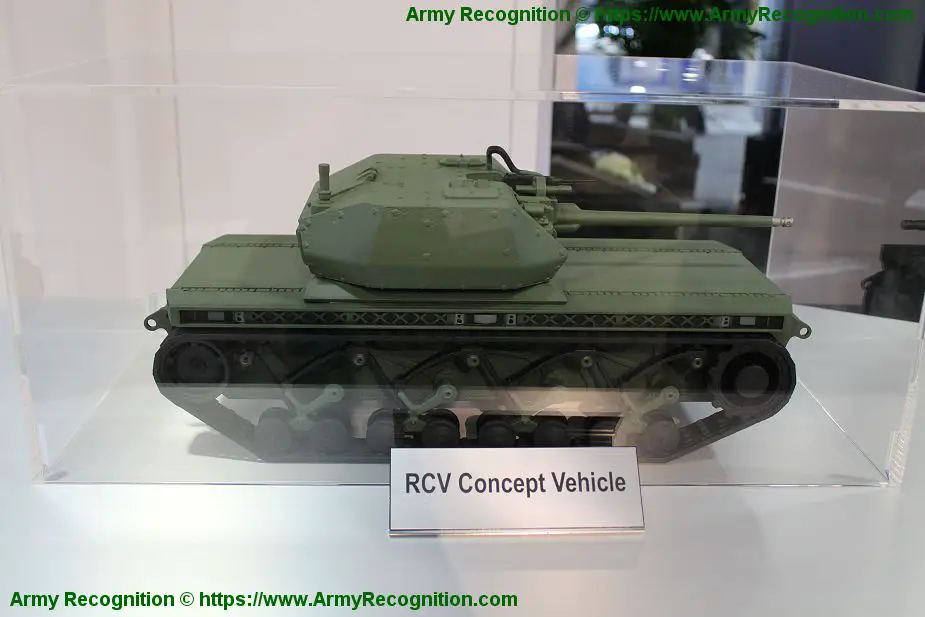Breaking news
AUSA 2019: General Dynamics unveils TL1 Robotic Combat Vehicle RCV concept.
General Dynamics Land Systems (GDLS) unveils a scale model of its concept vehicle for U.S. Army Robotic Combat Vehicle (RCV) Program. The RCV (also known as TL1) of GDLS is the next step in unmanned vehicles. It’s designed to exceed Army objectives for weight and payload for the Robotic Combat Vehicle-Light and RCV-Medium programs.

Scale model of General Dynamics Land Systems TL1 Robotic Combat Vehicle concept at AUSA 2019, the Association of United States Army defense exhibition in Washington D.C., October 2019. (Picture source Army Recognition)
The General Dynamics Land Systems (GDLS) TL1 is based on a tracked vehicle platform using four double-tired road wheel bogies suspended on vertical suspension system. The drive sprocket is at the front of the hull with the track idler at the rear and five-track return rollers used to guide the upper track portions.
According to our first analysis, the TL1 scale model seems to be fitted with a weapon system similar to the turret mounted on the Ripsaw M5, a combat robotic vehicle platform presented by the Textron Systems at AUSA 2019, which is an MCT-30 turret designed by the Norwegian Company Kongsberg that is armed with 30mm automatic cannon.
The U.S. Army has launched a program to acquire a new family of UGV (Unmanned Ground Vehicle) under the Robotic Combat Vehicle (RCV) program that includes the RCV-Light (RCV-L) that can be transportable by a rotary-wing aircraft, the RCV-Medium (RCV-M) that can be fit in the cargo hold of C-130 Hercules tactical airlifter and the RCV-Heavy (RCV-H) that can be fit in the cargo hold of C-17 Globemaster III strategic airlifter.
The Robotic Combat Vehicle-Light (RCV-L) program is part of the Army Futures Command's Next Generation Combat Vehicle. The goal of this program is to provide U.S. soldiers of mechanized infantry units and armor units with combat robot vehicles that extend their reach and effectiveness on the battlefield.
The U.S. Army expects to have prototypes of the RCV-L as well as the RCV-M (the Robotic Combat Vehicle-Medium) in full testing in 2020. Two of each design will be selected to perform field trial tests, with the goal of operational deployment by 2028.




























